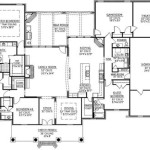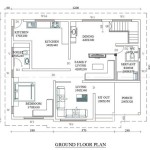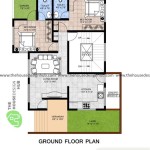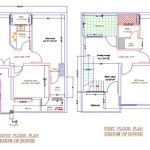Creating Room Plans with Free Online Tools
Designing or renovating a room often begins with a detailed plan. A room plan serves as a visual representation of the space, allowing individuals to experiment with layouts, furniture placement, and overall design concepts before committing to potentially costly changes. While professional architectural software offers a comprehensive suite of features, several free online tools provide a viable alternative for creating basic room plans. These tools are accessible, user-friendly, and suitable for both design novices and seasoned professionals seeking a quick and easy planning solution.
This article explores the functionalities and benefits of drawing room plans using free online tools. It examines the diverse options available, outlines specific features, and provides guidance on maximizing their potential for effective room design.
Accessibility and Cost-Effectiveness
One of the primary advantages of utilizing free online room planning tools is their accessibility. These tools typically require no downloads or installations, operating directly within a web browser. This eliminates the need for specific operating systems or hardware configurations, making them accessible to a wider range of users. Furthermore, the absence of subscription fees or licensing costs makes them a particularly attractive option for individuals working with limited budgets or those who only require room planning capabilities for a single project.
The ease of access extends beyond the software itself. Many free online tools offer intuitive interfaces and drag-and-drop functionalities, minimizing the learning curve and allowing users to quickly familiarize themselves with the tool's features. This accessibility empowers individuals with limited technical expertise to create professional-looking room plans without significant time investment in training or specialized instruction. The interactive nature of these tools also encourages experimentation and iterative design, as users can easily modify and refine their plans in real-time.
While professional software often includes extensive libraries of furniture models and design elements, free tools typically offer a basic selection of commonly used items. This can be a limitation for highly specific design requirements. However, many tools provide options to customize the size, color, and texture of these elements, enabling users to approximate the look and feel of their desired furniture and décor. The ability to upload custom images or drawings can further enhance the realism and personalization of the room plan.
The cost-effectiveness of free online room planners extends beyond the software itself. By enabling users to visualize and refine their designs before making purchases or undertaking renovations, these tools can help prevent costly mistakes. A well-thought-out room plan can identify potential space constraints, furniture placement issues, or aesthetic inconsistencies, allowing users to address these challenges proactively and avoid unnecessary expenses.
Key Features and Functionalities
Despite being free, many online room planners offer a surprisingly robust set of features. These features enable users to create detailed and accurate room plans that effectively communicate their design ideas. Some of the most common and useful functionalities include:
*Wall Drawing and Dimensioning:
The foundation of any room plan is the accurate representation of the room's dimensions and layout. Free tools typically allow users to draw walls with precise measurements, defining the shape and size of the space. The ability to adjust wall thickness, specify door and window placements, and indicate ceiling heights is crucial for creating a realistic and functional room plan. Automated dimensioning tools streamline the process of labeling wall lengths and other key measurements, ensuring clarity and accuracy. *Furniture Placement and Arrangement:
A central aspect of room planning is the arrangement of furniture. Free tools often provide libraries of pre-designed furniture models, including sofas, chairs, tables, beds, and storage units. Users can drag and drop these models into the room plan, adjust their size and orientation, and experiment with different layouts to optimize space utilization and traffic flow. Many tools allow users to rotate, flip, and move furniture with ease, facilitating rapid prototyping and iterative design exploration. *Floor Plan Creation:
These tools usually provide the ability to create floor plans by drawing walls to required sizes and shapes. Users can then insert doors and windows as needed. *Customization Options:
Beyond basic furniture placement, many free tools offer customization options to personalize the design. Users can typically change the colors and textures of walls, floors, and furniture to match their desired aesthetic. Some tools also allow users to upload custom images or textures, enabling them to incorporate unique design elements or represent specific materials. The ability to add annotations, labels, and notes to the room plan further enhances its clarity and communication value. *Visualization and Perspective Views:
While a top-down floor plan provides a clear overview of the room layout, it can be challenging to visualize the space in three dimensions. Some free tools offer the ability to generate 3D renderings or perspective views of the room plan, providing a more realistic and immersive experience. These visualizations allow users to evaluate the spatial relationships between different elements, assess the overall aesthetic impact of the design, and identify potential areas for improvement. *Saving and Sharing Options:
Once a room plan is complete, it is essential to have the ability to save it for future reference or share it with others. Free tools typically offer options to save the room plan in various file formats, such as PDF, JPG, or PNG. Some tools also provide options to share the room plan directly via email or social media, facilitating collaboration and feedback from stakeholders.The specific features and functionalities offered by each free online room planner vary, so it is important to carefully evaluate the options available and choose a tool that best meets the specific needs of the project.
Maximizing the Potential of Free Room Planning Tools
While free online room planning tools offer a valuable resource for design and renovation projects, it is important to approach their use strategically to maximize their potential. Here are some key considerations and best practices:
*Accurate Measurements:
The accuracy of a room plan is directly dependent on the accuracy of the measurements used to create it. Before starting to draw a room plan, it is essential to take precise measurements of all walls, doors, windows, and other relevant features. Use a reliable measuring tape and record all measurements carefully, double-checking for errors. Consider creating a preliminary sketch of the room with approximate dimensions to guide the measurement process and ensure that all key features are accounted for. *Scalability and Proportionality:
When placing furniture and other design elements in the room plan, it is important to maintain a sense of scale and proportionality. Use the tool's measurement features to ensure that furniture models are appropriately sized for the room and that their dimensions accurately reflect the actual furniture being considered. Avoid overcrowding the space with too many items or placing furniture that is disproportionately large or small relative to the room's dimensions. *Experimentation and Iteration:
One of the key benefits of using a free online room planner is the ability to experiment with different layouts and design concepts. Do not be afraid to try out different furniture arrangements, color schemes, and material choices. Use the tool's undo and redo features to easily revert to previous versions of the design if an experiment does not yield the desired results. Iterate on the design based on observations and feedback, gradually refining the room plan until it meets the project's objectives. *Collaboration and Feedback:
Room planning is often a collaborative process, involving multiple stakeholders such as homeowners, designers, and contractors. Use the sharing features of the free online tool to solicit feedback from others and incorporate their suggestions into the design. Encourage open communication and discussion to ensure that the final room plan reflects the needs and preferences of all parties involved. *Understand Limitations:
While free room planning tools are useful, they have limitations. Complex elements like piping, wiring, or structural components cannot be easily represented. More advanced features like lighting simulation or energy efficiency assessments are also usually absent. It is important to recognize these limitations and use the tool appropriately, supplementing it with other resources or professional expertise as needed.By following these best practices, users can leverage the power of free online room planning tools to create effective and informative room plans that facilitate successful design and renovation projects.

Room Layout Planner Design

Room Layout Planner Design
:max_bytes(150000):strip_icc()/plan-your-room-579be53f5f9b589aa9883da4.png?strip=all)
The Best Free Room Layout Planners

Top 10 Free Interior Design Room Planning Tools

Floor Plan Creator Planner 5d

Best Free Room Planner Tools

Room Planner Free Templates To Make Plans

Room Layout Planner Design

Rambling Renovators Design A Room For Free One Challenge Week 3 Small Layouts Bedroom Layout

Floor Plan Creator And Designer Free Easy App








